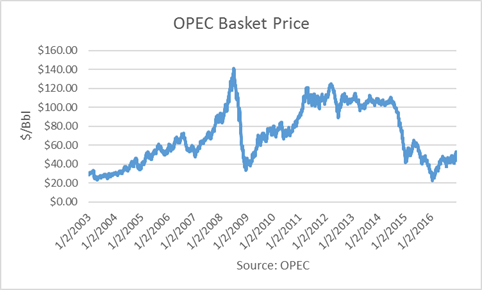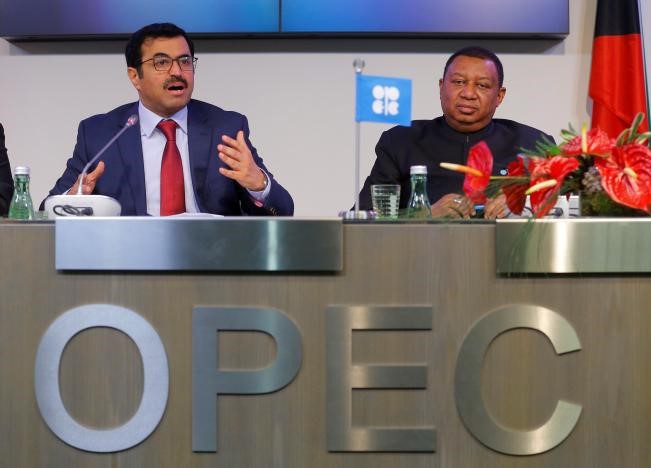
Saudi Arabia's energy minister, Khalid Al-Falih, clarified his position on the cuts and oil price target. After the meeting with non-OPEC producers, there was a press conference, and the media reported that he had implied Saudi Arabia would make deeper cuts than agreed at the OPEC meeting. Also many commentators seem to think Saudi Arabia’s price objective is in the $60s or $70s.
But in conjunction with announcing Saudi Arabia's 2017 budget, Mr. Al-Falih said that the kingdom sees no need for addition production cuts than the ones already pledged by the OPEC and some non-OPEC producers. He said the market intervention is intended only to "nudge along" the re-balancing of an oversupplied global oil market. He said he expects oil prices to rise "tangibly" from the 2016 average, and assumes oil will average $55 in 2017 and $61 in 2018. OPEC's Reference Basket (ORB) was $52.25 on December 21st, so it appears prices are close to where he expects them to average next year.

Economists have estimated that the new Saudi 2017 budget is based on oil prices in a range of $47 to $55/b. Al-Falih said that the budgeted oil price is a "conservative" scenario. Continue reading "Saudi Arabia Assumes $55 Oil Price in 2017"


